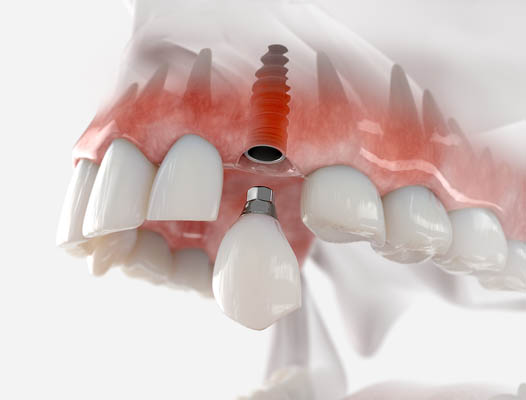Understanding the Dental Implant Process

Nearly 3 million people in the United States have a dental implant, and the number is projected to grow over the coming years. Due to their appearance, reliability, and functionality, more people are turning to implants over dentures and bridges. If you are thinking of getting dental implants, this article provides a guide on the tooth replacement process, so you know what to expect from the procedure.
Overview of the dental implant process
Dental implants involve the replacement of tooth roots with metal posts. These posts are screw-like and provide support for the artificial teeth. How the dentist completes the process depends on the number of missing teeth, the condition of the jawbone, and allergies. Patients may need to undergo multiple dental treatments so that the bone can fuse with the implant. The fusion and healing may take a while, but it is necessary in order to create a firm foundation for the new tooth.
Initial evaluation
The dentist will perform a comprehensive exam to ascertain the condition of the jawbone and the best method to use. The initial consultation typically includes x-rays, a dental health review, and taking impressions. The dental professional will discuss medical conditions and current medications. In some cases, patients may be given antibiotics before the procedure to prevent infection.
Placing the dental implant and bone grafting
If the jawbone is strong and has enough density, a bone graft procedure may not be necessary. The jawbone needs to be strong since a lot of pressure is generated when chewing, and the bone needs to be able to withstand that force and protect the implant. If extra bone material is needed to augment the jawbone, the bone material will come from another part of the body or from artificial sources.
The bone will need to heal after a bone graft before an implant can be placed. After the bone heals, the dentist will place the implant, and the bone will start to grow around it. The integration makes the implant a structural part of the jawbone. The healing process depends on the patient and may take between three to nine months.
Placing the abutment
When the implant is stable, the dentist will attach the abutment over the implant. This piece anchors the crown to the implant. This procedure is painless, although the dentist might apply local anesthesia to numb the area.
Sometimes, the abutment can be placed when the implant is inserted since it sits under the gum line. It will be visible until the crown goes over it. A healing cap will be attached to guide the healing process.
Adding the final tooth restoration
After the gums heal, the dentist will make the artificial tooth. The final crown can be screwed or cemented. If multiple teeth are missing, a bridge or denture will be used. If a removable option is used, patients will be able to remove the dental restoration for cleaning.
Ready to get a dental implant?
Replacing one or more missing teeth with dental implants is a major step. Talk to an experienced dentist to get answers to questions you might have about the procedure and to get a full overview.
Request an appointment here: https://www.dentistinridgewood.com or call Aston Dental at (201) 620-9996 for an appointment in our Ridgewood office.
Check out what others are saying about our dental services on Yelp: Dental Implants in Ridgewood, NJ.
Related Posts
General dentists are the primary dental professionals people visit once or twice per year for oral health care. According to the American Dental Association, or ADA, biannual appointments are necessary to protect the integrity of your oral health, regardless of age. During these appointments, the general dentist and their team perform check-ups and recommend preventative…
Routine checkups from your general dentist can maintain or even improve your dental health. It can be challenging to keep your dental appointments because of busy schedules and demanding lifestyles. But making an effort to keep them can be very rewarding. Here are the details on how regular appointments with your general dentist can maintain…
Wisdom tooth extraction is often necessary in order to promote good oral health. The procedure can be daunting to some; however, the result is a healthier oral cavity, thus ensuring better overall health. Because wisdom tooth extraction is an involved procedure, it can be helpful to know what to expect beforehand. This allows for the opportunity…
Maintaining good oral hygiene is an essential part of overall health and well-being. It can prevent issues like tooth decay and gum disease. A general dentist can help educate patients about properly caring for their teeth, treating oral health issues, and more. Here are some practical tips to help you achieve a bright and healthy…

